SLUS544G September 2003 – April 2017 UCC28220 , UCC28221
PRODUCTION DATA.
- 1 Features
- 2 Applications
- 3 Description
- 4 Revision History
- 5 Device Comparison Table
- 6 Pin Configuration and Functions
- 7 Specifications
- 8 Detailed Description
- 9 Application and Implementation
- 10Power Supply Recommendations
- 11Layout
- 12Device and Documentation Support
- 13Mechanical, Packaging, and Orderable Information
Package Options
Refer to the PDF data sheet for device specific package drawings
Mechanical Data (Package|Pins)
- D|16
- PW|20
Thermal pad, mechanical data (Package|Pins)
Orderable Information
7 Specifications
7.1 Absolute Maximum Ratings
over operating free-air temperature range (unless otherwise noted)(1)| MIN | MAX | UNIT | ||
|---|---|---|---|---|
| High-voltage start-up input, VIN | 110 | V | ||
| Supply voltage, VDD | 15 | V | ||
| Output current (OUT1, OUT2) dc, IOUT(dc) | ±10 | mA | ||
| OUT1/ OUT2 capacitive load | 200 | pF | ||
| REF output current, IREF | 10 | mA | ||
| Current sense inputs, CS1, CS2 | –1 | 2 | V | |
| Analog inputs (CHG, DISCHG, SLOPE, REF, CNTRL) | –0.3 | 3.6 | V | |
| Analog inputs (SS, LINEOV, LINEUV, LINEHYS) | –0.3 | 7 | V | |
| Power dissipation at TA = 25°C | PW package | 400 | mW | |
| D package | 650 | |||
| Junction operating temperature, TJ | –55 | 150 | °C | |
| Storage temperature, Tstg | –65 | 150 | °C | |
(1) Stresses beyond those listed under Absolute Maximum Ratings may cause permanent damage to the device. These are stress ratings only, which do not imply functional operation of the device at these or any other conditions beyond those indicated under Recommended Operating Conditions. Exposure to absolute-maximum-rated conditions for extended periods may affect device reliability.
7.2 ESD Ratings
| VALUE | UNIT | |||
|---|---|---|---|---|
| V(ESD) | Electrostatic discharge | Human-body model (HBM), per ANSI/ESDA/JEDEC JS-001(1) | ±2500 | V |
| Charged-device model (CDM), per JEDEC specification JESD22-C101(2) | ±1500 | |||
(1) JEDEC document JEP155 states that 500-V HBM allows safe manufacturing with a standard ESD control process.
(2) JEDEC document JEP157 states that 250-V CDM allows safe manufacturing with a standard ESD control process.
7.3 Recommended Operating Conditions
over operating free-air temperature range (unless otherwise noted)| MIN | MAX | UNIT | ||
|---|---|---|---|---|
| VIN | High-voltage start-up input | 36 | 76 | V |
| VDD | Supply voltage | 8.4 | 14.5 | V |
7.4 Thermal Information
| THERMAL METRIC(1) | UCC28220, UCC28221 | UCC28221 | UNIT | ||
|---|---|---|---|---|---|
| D (SOIC) | PW (TSSOP) | PW (TSSOP) | |||
| 16 PINS | 16 PINS | 20 PINS | |||
| RθJA | Junction-to-ambient thermal resistance | 73 | 100.9 | 92.5 | °C/W |
| RθJC(top) | Junction-to-case (top) thermal resistance | 32.6 | 28.8 | 27.6 | °C/W |
| RθJB | Junction-to-board thermal resistance | 30.6 | 46.6 | 43.7 | °C/W |
| ψJT | Junction-to-top characterization parameter | 5.7 | 1.4 | 1.4 | °C/W |
| ψJB | Junction-to-board characterization parameter | 30.3 | 46 | 43.2 | °C/W |
| RθJC(bot) | Junction-to-case (bottom) thermal resistance | — | — | — | °C/W |
(1) For more information about traditional and new thermal metrics, see the Semiconductor and IC Package Thermal Metrics application report.
7.5 Electrical Characteristics
VDD = 12 V, 0.1-µF capacitor from VDD to GND, 0.1-µF capacitor from REF to GND, FOSC = 1 MHz, TA = –40°C to 105°C, and TA = TJ (unless otherwise noted).| PARAMETER | TEST CONDITIONS | MIN | TYP | MAX | UNIT |
|---|---|---|---|---|---|
| OVERALL | |||||
| Operating VDD | 8.4 | 14.5 | V | ||
| Quiescent current | SS = 0 V, no switching, FOSC = 1 MHz | 1.5 | 3 | 4 | mA |
| Operating current | Outputs switching, FOSC = 1 MHz | 1.6 | 3.5 | 6 | mA |
| START-UP | |||||
| Startup current | UCC28220, VDD < (UVLO – 0.8) | 200 | µA | ||
| UVLO start threshold | UCC28220 | 9.5 | 10 | 10.5 | V |
| UCC28221 | 12.3 | 13 | 13.7 | ||
| UVLO stop threshold | 7.6 | 8 | 8.4 | V | |
| UVLO hysteresis | UCC28220 | 1.8 | 2 | 2.2 | V |
| UCC28221 | 4.8 | 5 | 5.2 | ||
| JFET ON threshold | SS = 0, outputs not switching, VDD decreasing | 9.5 | 10 | 10.5 | V |
| SS = 2 V, Cntrl = 2 V, output switching, VDD decreasing; same threshold as UVLO stop | 7.6 | 8 | 8.4 | ||
| High voltage JFET current | VIN = 36 V to 76 V, VDD = 0 V | 16 | 48 | 100 | mA |
| VIN = 36 V to 76 V, VDD = 10 V | 4 | 16 | 40 | ||
| VIN = 36 V to 76 V, VDD < UVLO | 4 | 12 | 40 | ||
| JFET leakage | VIN = 36 V to 76 V, VDD = 14 V | 100 | µA | ||
| REFERENCE | |||||
| Output voltage | 8 V < VDD < 14 V, ILOAD = 0 mA to –10 mA | 3.15 | 3.3 | 3.45 | V |
| Output current | Outputs not switching, CNTRL = 0 V | 10 | mA | ||
| Output short-circuit current | VREF = 0 V | –40 | –20 | –10 | mA |
| VREF UVLO | 2.55 | 3 | 3.25 | V | |
| SOFT START | |||||
| SS charge current | RCHG = 10.2 kΩ, SS = 0 V | –70 | –100 | –130 | µA |
| SS discharge current | RCHG = 10.2 kΩ, SS = 2 V | 70 | 100 | 130 | µA |
| SS initial voltage | LINEOV = 2 V, LINEUV = 0 V | 0.5 | 1 | 1.5 | V |
| SS voltage at 0% dc | Point at which output starts switching | 0.5 | 1.2 | 1.8 | V |
| SS voltage ratio | 75% | 90% | 100% | ||
| SS max voltage | LINEOV = 0 V, LINEUV = 2 V | 3 | 3.5 | 4 | V |
| OSCILLATOR AND PWM | |||||
| Output frequency | RCHG = 10.2 kΩ, RDISCHG = 10.2 kΩ | 450 | 500 | 550 | kHz |
| Oscillator frequency | RCHG = 10.2 kΩ, RDISCHG = 10.2 kΩ | 900 | 1000 | 1100 | kHz |
| Output maximum duty cycle | RCHG = 10.2 kΩ, RDISCHG = 10.2 kΩ, measured at OUT1 and OUT2 |
73% | 75% | 77% | |
| CHG voltage | 2 | 2.5 | 3 | V | |
| DSCHG voltage | 2 | 2.5 | 3 | V | |
| SLOPE COMPENSATION | |||||
| Slope | RSLOPE = 75 kΩ, RCH = 66 kΩ, RDISCHG = 44 kΩ, Csx = 0 V to 0.5 V |
140 | 200 | 260 | mV/us |
| Channel matching | RSLOPE = 75 kΩ, Csx = 0 V | 0% | 10% | ||
| CURRENT SENSE | |||||
| CS1, CS2 bias current | CS1 = 0, CS2 = 0 | –500 | 0 | 500 | nA |
| Prop delay CSx to OUTx | CSx input 0 V to 1.5 V step | 40 | 85 | ns | |
| CS1, CS2 sink current | CSx = 2 V | 2.3 | 4.5 | 7 | mA |
| CNTRL | |||||
| Resistor ratio(1) | 0.6 | ||||
| Ctrl input current | CTRL = 0 V and 3.3 V | –100 | 0 | 100 | nA |
| Ctrl voltage at 0% dc | CSx = 0 V, point at which output starts switching (checks resistor ratio) | 0.5 | 1.2 | 1.8 | V |
| OUTPUT (OUT1, OUT2) | |||||
| Low level | IOUT = 10 mA | 0.4 | 1 | V | |
| High level | IOUT = −10 mA, VREF – VOUT | 0.4 | 1 | V | |
| Rise time | CLOAD = 50 pF | 10 | 20 | ns | |
| Fall time | CLOAD = 50 pF | 10 | 20 | ns | |
| LINE SENSE | |||||
| LINEOV threshold | TA = 25°C | 1.24 | 1.26 | 1.28 | V |
| TA = –40°C to 105°C | 1.235 | 1.26 | 1.285 | ||
| LINEUV threshold | TA = 25°C | 1.24 | 1.26 | 1.28 | V |
| TA = –40°C to 105°C | 1.235 | 1.26 | 1.285 | ||
| LINEHYST pullup voltage | LINEOV = 2 V, LINEUV = 2 V | 3.1 | 3.25 | 3.4 | V |
| LINEHYST off leakage | LINEOV = 0 V, LINEUV = 2 V | –500 | 0 | 500 | nA |
| LINEHYS pullup resistance | I = –20 µA | 100 | 500 | Ω | |
| LINEHYS pulldown resistance | I = 20 µA | 100 | 500 | Ω | |
| LINEOV, LINEUV bias I | LINEOV = 1.25 V, LINEUV = 1.25 V | –500 | 500 | nA | |
(1) Ensured by design. Not 100% tested in production.
7.6 Typical Characteristics
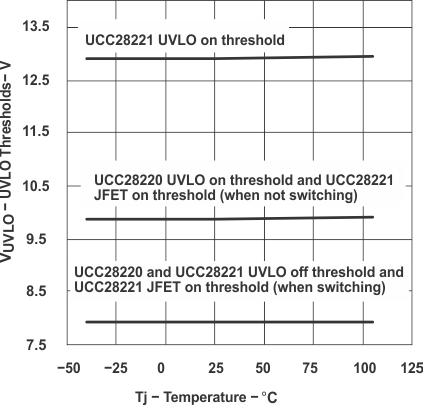 Figure 1. UVLO Thresholds vs Temperature
Figure 1. UVLO Thresholds vs Temperature
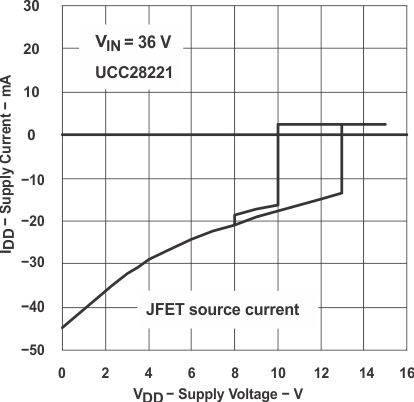 Figure 3. Supply Current vs Supply Voltage
Figure 3. Supply Current vs Supply Voltage
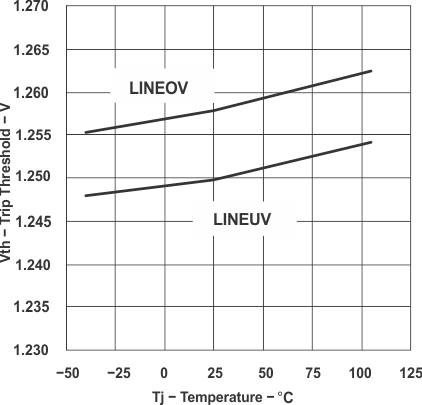 Figure 5. LINEOV and LINEUV Thresholds vs Temperature
Figure 5. LINEOV and LINEUV Thresholds vs Temperature
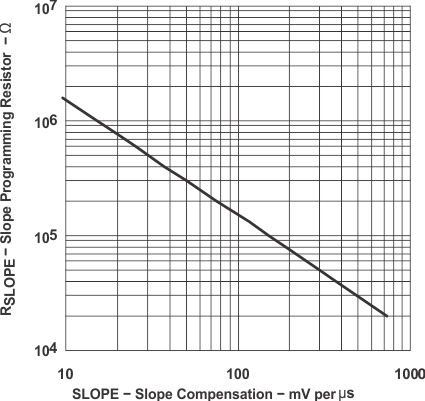 Figure 7. Programming Resistor vs Slope Compensation
Figure 7. Programming Resistor vs Slope Compensation
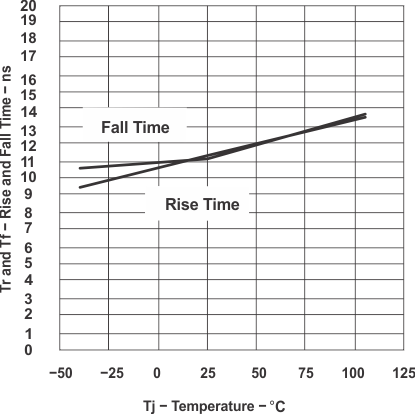
CL = 50 pF
Figure 9. Rise and Fall Time vs Temperature
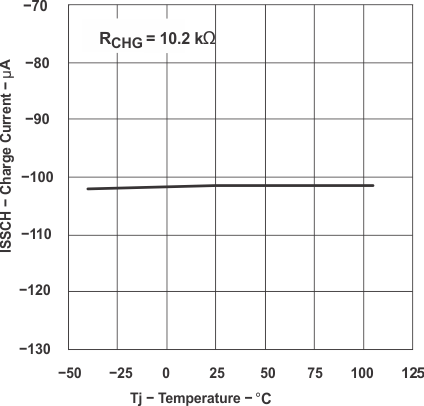 Figure 11. Soft-Start Charge Current vs Temperature
Figure 11. Soft-Start Charge Current vs Temperature
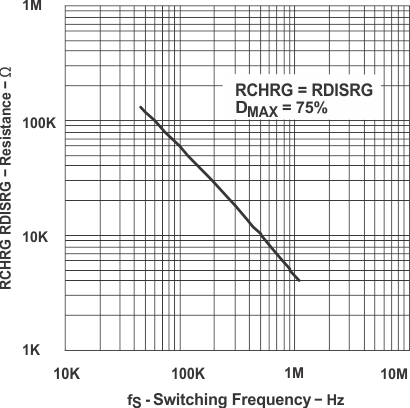 Figure 13. Programming Resistors vs Switching Frequency
Figure 13. Programming Resistors vs Switching Frequency
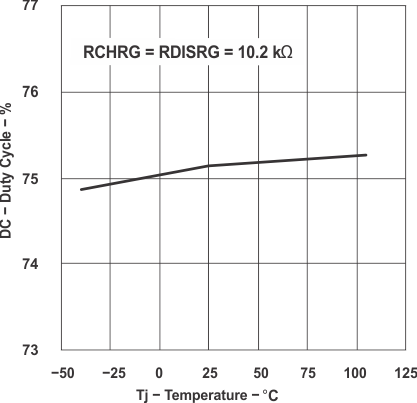 Figure 15. Programmable Max Duty Cycle vs Temperature
Figure 15. Programmable Max Duty Cycle vs Temperature
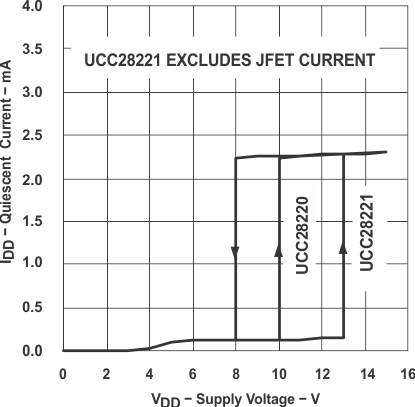 Figure 2. Quiescent Current vs Supply Voltage
Figure 2. Quiescent Current vs Supply Voltage
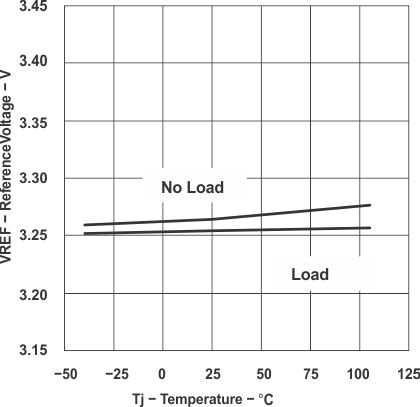 Figure 4. Reference Voltage vs Temperature
Figure 4. Reference Voltage vs Temperature
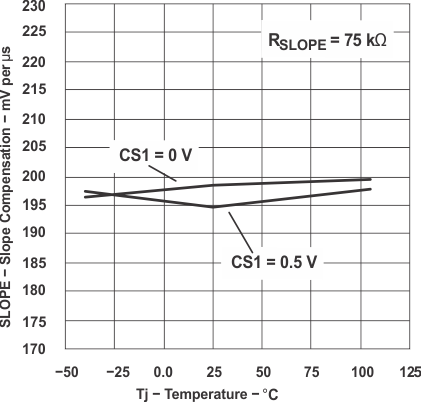 Figure 6. Slope Compensation vs Temperature
Figure 6. Slope Compensation vs Temperature
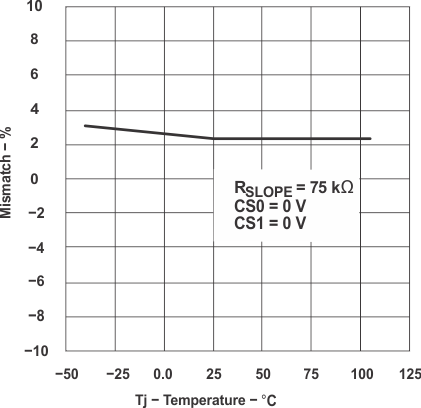 Figure 8. Channel1 and Channel2 Slope Matching
Figure 8. Channel1 and Channel2 Slope Matchingvs Temperature
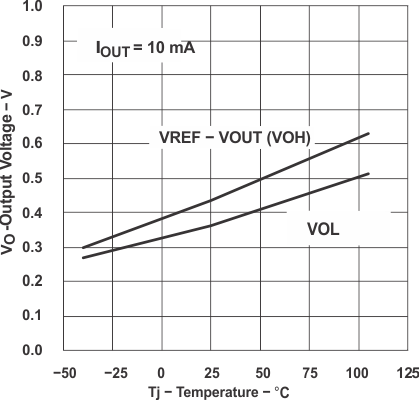
space
Figure 10. VOH and VOL vs Temperature
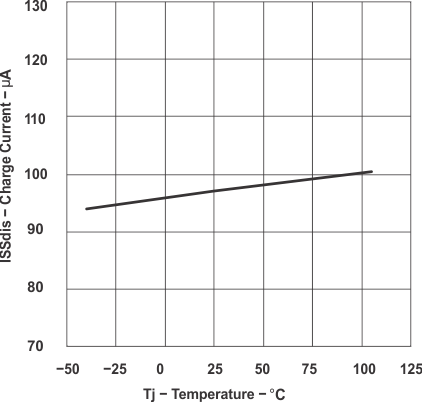 Figure 12. Soft-Start Discharge Current vs Temperature
Figure 12. Soft-Start Discharge Current vs Temperature
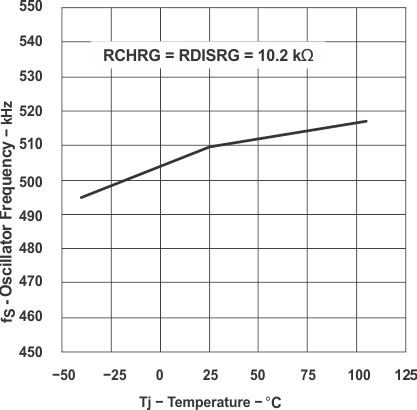 Figure 14. Oscillator Frequency vs Temperature
Figure 14. Oscillator Frequency vs Temperature
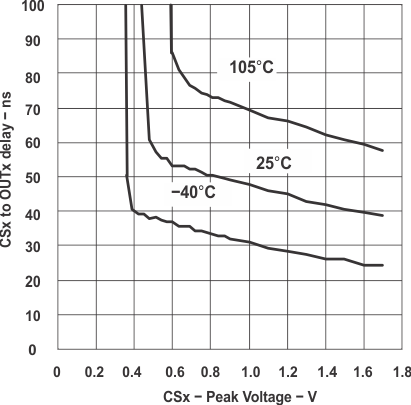 Figure 16. CSx to OUTx Delay vs CSx Peak Voltage
Figure 16. CSx to OUTx Delay vs CSx Peak Voltage